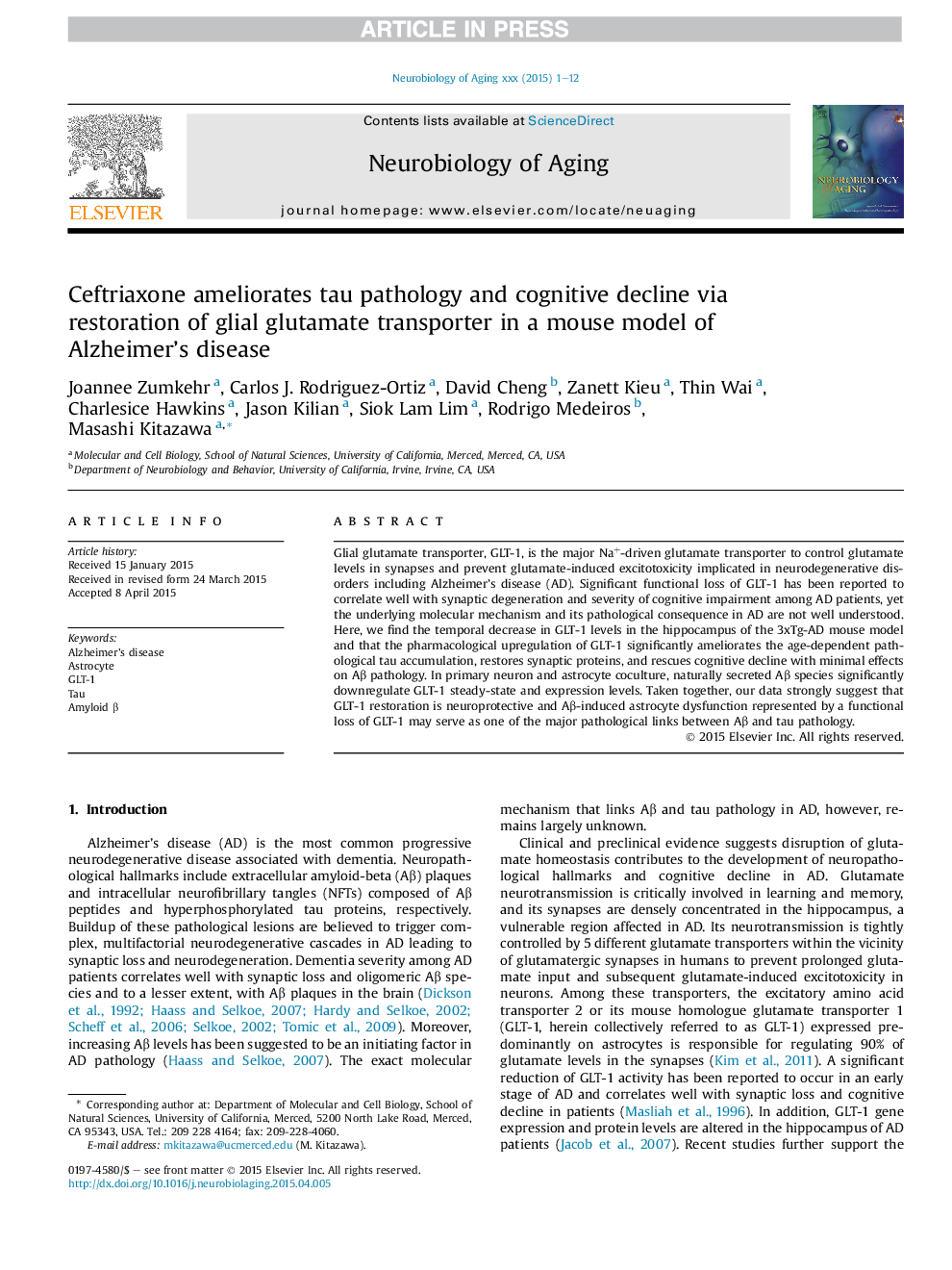| Article ID | Journal | Published Year | Pages | File Type |
|---|---|---|---|---|
| 6804141 | Neurobiology of Aging | 2015 | 12 Pages |
Abstract
Glial glutamate transporter, GLT-1, is the major Na+-driven glutamate transporter to control glutamate levels in synapses and prevent glutamate-induced excitotoxicity implicated in neurodegenerative disorders including Alzheimer's disease (AD). Significant functional loss of GLT-1 has been reported to correlate well with synaptic degeneration and severity of cognitive impairment among AD patients, yet the underlying molecular mechanism and its pathological consequence in AD are not well understood. Here, we find the temporal decrease in GLT-1 levels in the hippocampus of the 3xTg-AD mouse model and that the pharmacological upregulation of GLT-1 significantly ameliorates the age-dependent pathological tau accumulation, restores synaptic proteins, and rescues cognitive decline with minimal effects on Aβ pathology. In primary neuron and astrocyte coculture, naturally secreted Aβ species significantly downregulate GLT-1 steady-state and expression levels. Taken together, our data strongly suggest that GLT-1 restoration is neuroprotective and Aβ-induced astrocyte dysfunction represented by a functional loss of GLT-1 may serve as one of the major pathological links between Aβ and tau pathology.
Related Topics
Life Sciences
Biochemistry, Genetics and Molecular Biology
Ageing
Authors
Joannee Zumkehr, Carlos J. Rodriguez-Ortiz, David Cheng, Zanett Kieu, Thin Wai, Charlesice Hawkins, Jason Kilian, Siok Lam Lim, Rodrigo Medeiros, Masashi Kitazawa,
